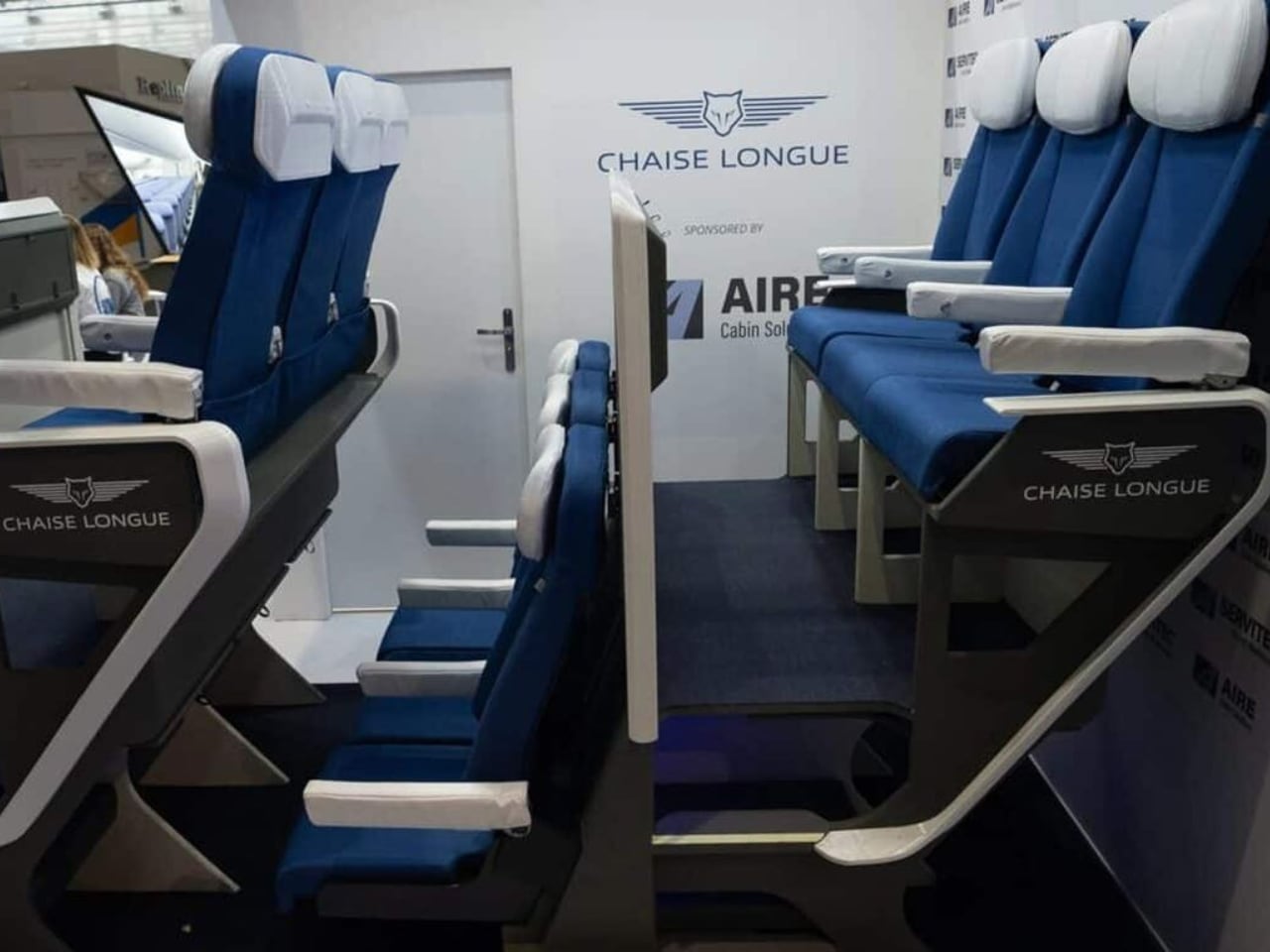The immediate and visceral public reaction to this concept tells us everything about human psychology and spatial relationships. Critics instantly dubbed the lower level the “fart zone,” and this nickname has stuck with remarkable persistence across social media platforms. This isn’t just juvenile humor – it’s a genuine psychological response to perceived vulnerability and proximity to bodily functions.
Designer: Airbus
The core issue stems from the lower passenger’s head being positioned directly adjacent to the rear end of the person sitting above them. Even with barriers and careful engineering, our primal brain immediately recognizes this as a compromising position. Humans have deep-seated psychological aversions to being placed in positions where they feel exposed to others’ bodily functions, regardless of actual risk.
Psychological Hierarchy and Power Dynamics
From a behavioral psychology standpoint, the double-decker design creates an uncomfortable power dynamic that mirrors social hierarchies. The person on top literally has the “upper hand” – they can see more, move more freely, and psychologically dominate the space. Meanwhile, the bottom passenger experiences what researchers call “subordinate positioning” – they’re literally looking up at someone else’s body.
This positioning triggers subconscious feelings of inferiority and vulnerability. Research on seating psychology shows that elevation affects our sense of control and comfort. When you’re seated below someone else, especially in close proximity, it can create anxiety and a sense of being trapped or dominated.
Claustrophobia and Spatial Anxiety
The bottom-level passengers face a unique form of claustrophobia that’s different from typical airplane anxiety. They’re not just enclosed by walls, but by another human being above them. This creates what psychologists call “social claustrophobia” – the feeling of being trapped not just by space, but by social proximity.
Looking at the second image showing the bottom-level perspective, you can immediately see how confined and cave-like the space appears. The person above essentially becomes a “human ceiling,” which psychologically feels much more oppressive than an inanimate aircraft structure.
Design Flaws from a Human Factors Perspective
From a pure design standpoint, this concept violates several fundamental principles of human comfort and ergonomics:
Visual Connection: Passengers need visual connection to the broader cabin environment for psychological comfort. The bottom-level passengers are visually isolated, which can increase anxiety and feelings of confinement.
Personal Bubble Violation: The design forces an intimate proximity between strangers that violates cultural norms about personal space. Even in cultures with smaller personal space expectations, having someone’s posterior directly above your head crosses universal boundaries.
Movement Restrictions: Bottom passengers appear to have limited ability to stand, stretch, or change positions – all crucial for both physical and psychological well-being during long flights.
The Visceral “Fart Zone” Phenomenon and Psychological Hierarchy
The speed and intensity with which people rejected this concept online reveals something profound about collective psychological responses to design. The “fart zone” nickname didn’t emerge from careful analysis – it was an immediate, gut-level reaction that thousands of people shared simultaneously. This suggests the design triggers what psychologists call “disgust response” – an evolved mechanism that helps us avoid potentially harmful or unpleasant situations. Even though the actual risk of exposure to unpleasant odors might be minimal with proper ventilation, our brains can’t override the visual and spatial cues that scream “avoid this situation.”
Beyond the obvious concerns about bodily functions, the reaction to this seating arrangement reflects broader cultural anxieties about class, dignity, and social positioning. Being relegated to the “bottom” carries symbolic weight beyond just physical positioning – it suggests a lower tier of service, reduced status, and compromised dignity. We’re hardwired to associate “higher” with “better” across virtually all cultures, making these hierarchical metaphors uncomfortably literal.
What really strikes me about this design is how it taps into something almost primal in our psychology. Being positioned directly underneath another person’s body, especially their rear end, triggers deep-seated fears about contamination, dominance, and vulnerability that probably go back to our evolutionary past. We’re hardwired to avoid situations where we might be exposed to others’ waste or bodily functions, and this seating arrangement visually suggests exactly that scenario, even if modern engineering would prevent it.
Our rational mind might understand that proper ventilation and barriers would address practical concerns, but our emotional brain sees “person’s butt above my head” and immediately rejects the entire concept. The designer Alejandro Núñez Vicente has had to repeatedly defend his creation, suggesting even he didn’t fully anticipate the psychological impact of the positioning. His focus was primarily on maximizing legroom and space efficiency, but he underestimated the powerful psychological factors at play.
Alternative Design Approaches
What’s particularly striking is how small design modifications could potentially address many of these psychological concerns. Better visual barriers, improved privacy screens, or even just rotating the seats 90 degrees could dramatically change the psychological dynamic while maintaining the space-saving benefits.
The fact that Airbus is apparently still exploring this concept suggests there might be ways to engineer around the psychological barriers, but it would require a much more sophisticated understanding of human comfort psychology than the current iteration demonstrates.
This whole controversy perfectly illustrates how good design must consider not just physical constraints and engineering challenges, but the deep psychological needs and cultural expectations of users. Sometimes the most logical space-saving solution can be completely undermined by factors that exist purely in our minds – but those mental factors are just as real and important as any physical design constraint.
The “Chaise Longue” serves as a perfect case study in how even well-intentioned innovation can backfire spectacularly when it ignores the complex psychological landscape of human behavior and social norms.
The post The Psychology of the “Fart Zone”: Why Airbus’s Double-Decker Plane Seats Trigger Our Deepest Fears first appeared on Yanko Design.

